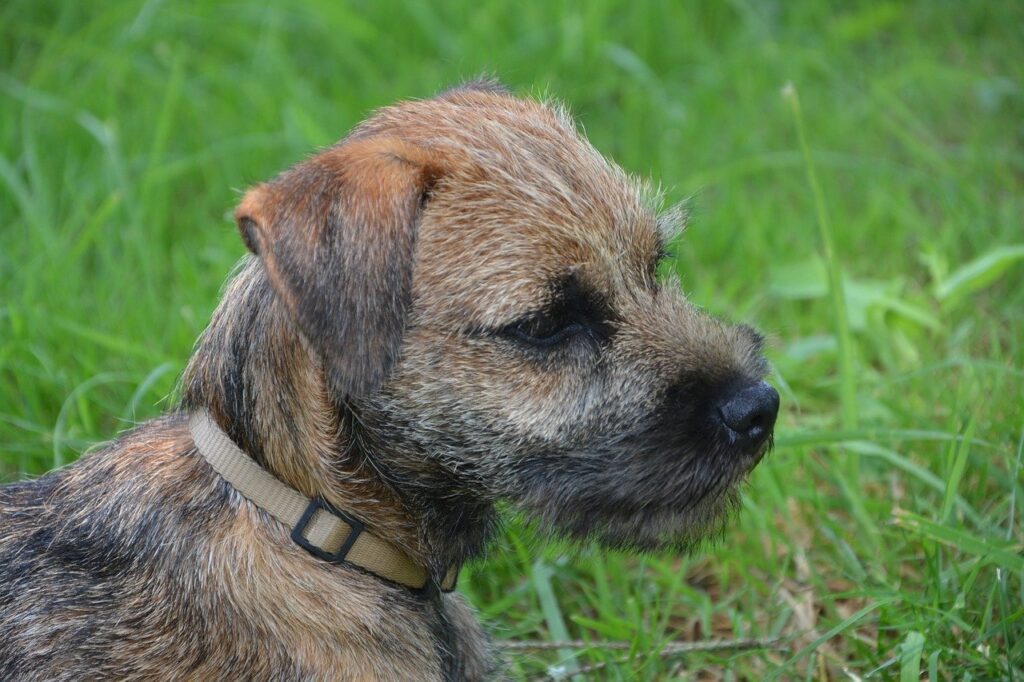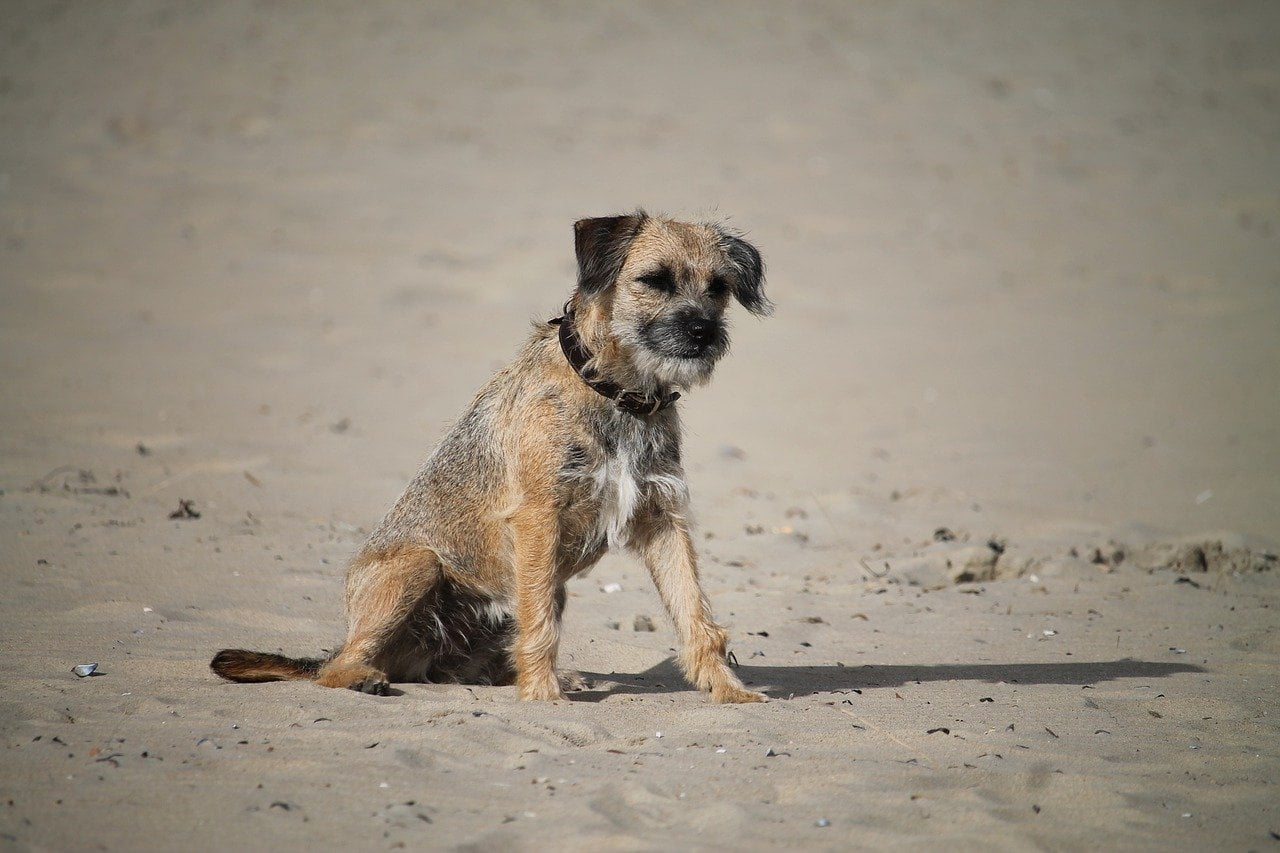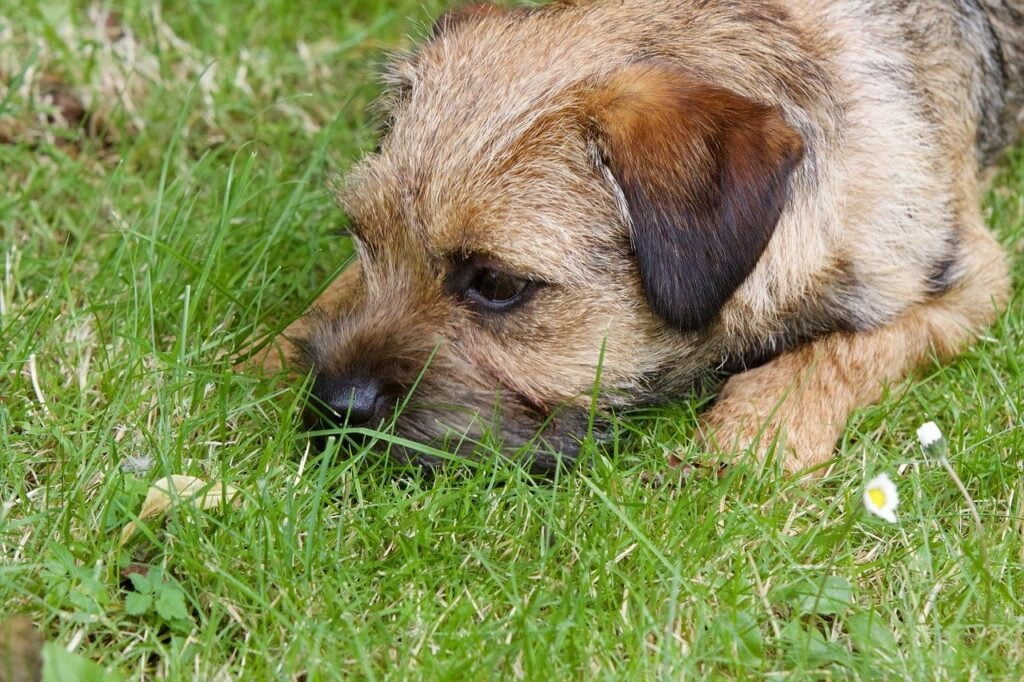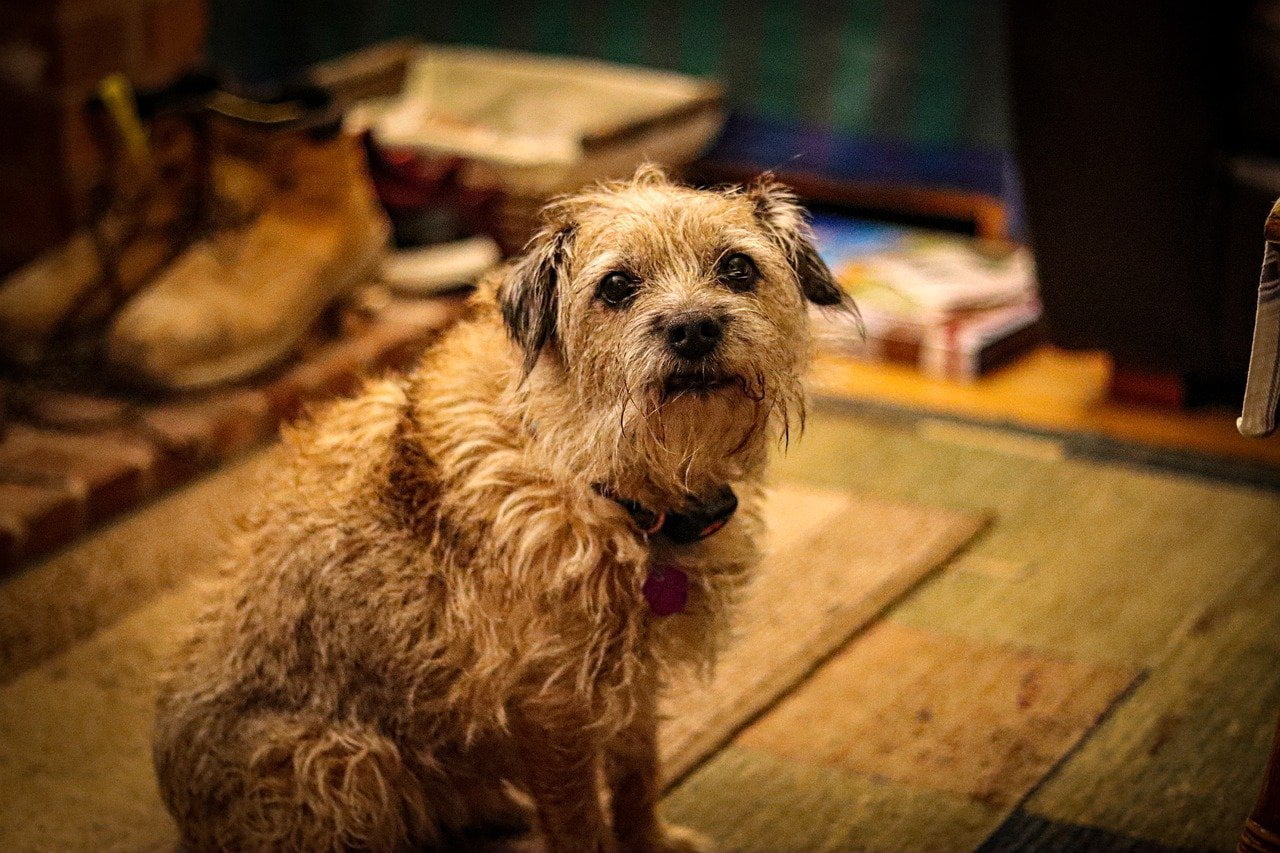
- Home
- Stud Dogs
Some of our most popular Stud Dog Breeds:
- Puppy Litters
- Dog Services
- Dog Breed Profiles
- Blog
- Contact Us
Border Terrier Breed Profile

The Border Terrier is a fearless, intelligent and loving breed with the typical terrier attribute of high activity levels, which keep them alert throughout the day. This active nature stems from their early involvement in fox hunting – they were originally used by farmers to drive away foxes that would terrorise their livestock, but progressed into being used in working-class fox hunts alongside groups of horses, showing their bravery in full force.The Border Terrier is a small dog, however, it’s quite a bit larger than the average terrier. They are well suited for families who stay active in the day, providing them with a significant amount of exercise. However, Border Terriers are very adaptable and can easily live in city environments, as well as the more open-spaced countryside, given they get the correct amount of activity. Even though they may be tough little terriers, they love a lap to sit on in the evenings, showing their more affectionate side.
Typical Border Terrier Facts:
Height: 11-14 inches (28-36cm)
Weight: 12-15 lbs (5-7 kg)
Average Litter Size: 4-5 puppies
Life Expectancy: 12-15 years
Kennel Club Classification: Terrier
Good with Children: Yes
Colour of a Border Terrier:
A Border Terrier’s coat can be fawn, red, blue-grey and tan, or grizzle and tan, with some having small patches of white on their coat.

Grooming a Border Terrier:
The Border Terrier’s coat is thick and coarse. They have a wiry, weather-resistant topcoat that protected them during their early involvement in fox hunting. Due to their dense coat, stripping should be done around twice a year, alongside weekly brushing to keep your Border Terrier’s coat neat and to prevent excess shedding. Stripping involves gently plucking your Border Terrier’s hair by hand or with a stripping knife, you could also get your Border Terrier stripped by a groomer.
Other grooming essentials include checking the ears frequently and brushing their teeth around two times a week to maintain oral hygiene and health. Ensure to trim your Border’s nails around once a month to prevent any overgrowth or splitting that might cause any discomfort or pain.
Border Terrier Common Ailments/Health Issues:
Border Terriers keep very active and are therefore quite a healthy breed; however, like any dog, they can develop certain health issues that owners should be aware of. Possible health conditions include hip dysplasia, heart defects, seizures and hypothyroidism, which can include signs of weight gain and a thinning coat.
However, if owners are aware of these conditions and maintain regular veterinary check-ups, as well as maintaining good care at home, the risk of a Border Terrier developing a health condition can be reduced.
Temperament of the Border Terrier:
The Border Terrier is very energetic and fairly independent. However, they also have a very affectionate and loving nature that creates a strong bond between a Border Terrier and their owner. Their terrier background creates an assumption of the breed being destructive and misbehaved, however, they are actually very obedient and can quickly adapt to their owner’s routine.

Training a Border Terrier:
The Border Terrier’s intelligence makes training much easier than the standard terrier. They respond well to rewards and positive training techniques, so steer clear of any firm or aggressive methods and make sure to be patient with your training.
Start with basic training of obedience when your Border Terrier is young, involving house rules and walking on the lead. This can be mixed in with puppy training classes and early socialisation with other dogs from a young age. Try to introduce them to strangers frequently, as this will build their confidence around people and get rid of any defensive behaviour.
Exercise for a Border Terrier:
The recommended exercise for Border Terriers is a brisk half-hour walk a day. This should be sufficient; however, they wouldn’t complain if you made it longer. Try to include off-lead play time or roaming in the garden throughout the day, as they don’t like being left alone for too long.
Ensure that your garden is secured with a fence, as Border Terriers can be prone to digging, and this will allow you to leave them roaming outside without having to worry, giving them plenty of exercise and stimulation to keep them busy.
History of the Border Terrier:
The Border Terrier originated in the Scottish and northeast English border countryside, specifically the Cheviot Hills, during the 1800s. The breed has previously been referred to as the Redesdale Terrier or the Coquetdale Terrier due to its area of origin. The Border Terrier is rumoured to be one of the oldest terriers, and it has appeared in large, traditional fox hunt paintings dating back to 1869.
The Border Terrier was favoured by farmers for its skills in hunting foxes that would terrorise the farmer’s livestock, which were particularly abundant in the Great British countryside. The Terrier has a long, athletic body that can easily squeeze through narrow spaces to flush foxes out of hiding. They were then popular amongst the working-class groups who ran hunts in Northern England for the same purpose of reducing the nuisance of foxes for farmers.
The fearless terrier was shown in agricultural society shows during the late 19th century in Northumberland, and this soon caused the Border Terrier to be more widely recognised. This then led to the formation of the Border Terrier Club, and then eventually to being documented as a breed by the British Kennel Club in 1920.
The Breed Standard soon accumulated requirements of how the Border Terrier should look and behave for its involvement in fox hunting. For example, the breed should be built for speed and stamina and have a small, long frame that can follow foxes into small spaces, as well as a weather-resistant coat to protect the dog in the winter seasons.
Border Terriers are still highly popular in Great Britain today. However, their involvement in fox hunting, and fox hunting as a sport itself, has decreased since the introduction of The Hunting Act in 2004, which banned hunting foxes, along with other mammals, with dogs in England.

Famous Border Terriers:
Elton John is rumoured to own around 10 Border Terriers in his large collection of over 20 dogs.
Border Terrier Stud Dog Listings:
A dog owner since the early 80s, after convincing his parents to buy a Yorkshire terrier named Sadie, Darren created Dream Dogs so dog owners could find the best dog related information on the Internet.